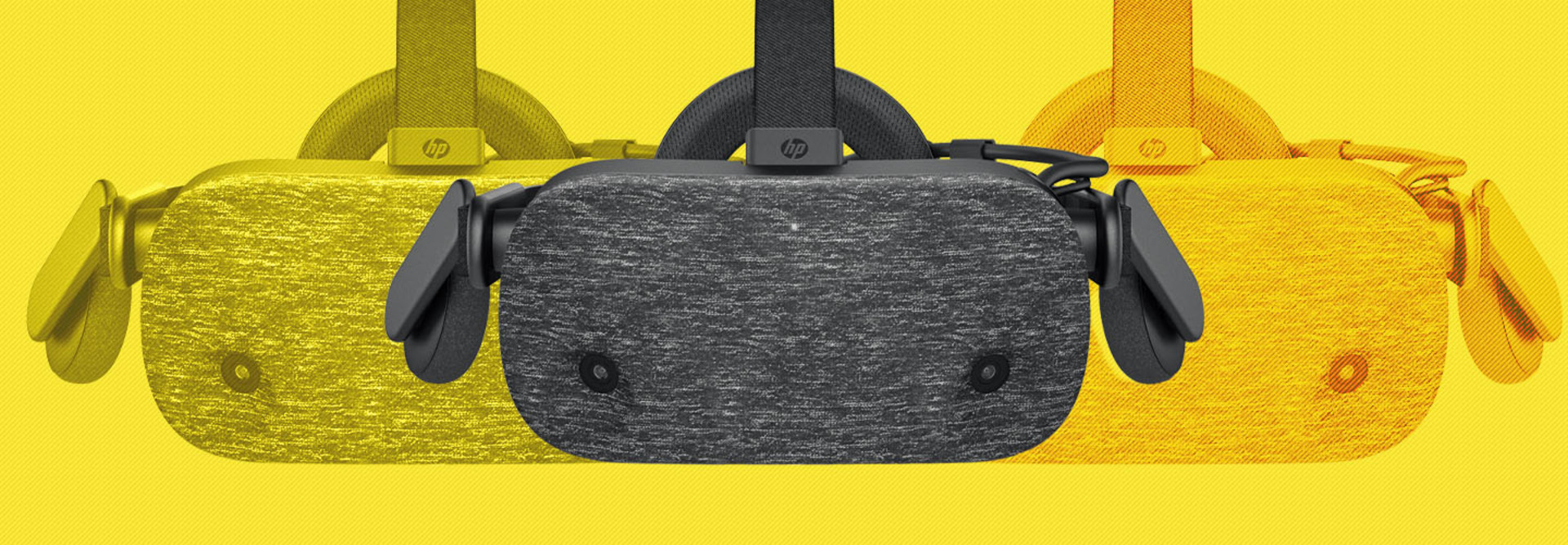Virtual reality tools promise benefits for the federal government, with powerful applications that include training employees, bolstering recruitment efforts and holding remote conferences. For example, the Veterans Affairs St. Louis Healthcare System office is using VR therapy for veterans seeking pain relief and relaxation training.
Agencies looking for the best tool should consider the HP Reverb Virtual Reality headset, which has so much potential that it might be tough to decide where to deploy it first.
The biggest selling point with the HP Reverb unit is ease of use. While it’s not quite plug and play, you don’t need to be a VR developer to take advantage of this fascinating new technology; this high-quality gear makes it simple.
At just over 1 pound, the HP Reverb Virtual Reality Headset is easy to wear, even over long periods of time. It’s compatible with Windows Mixed Reality for SteamVR, which lets agencies use all of the latest software in the voluminous Steam repository.
The setup process took less than 15 minutes. After downloading Windows Mixed Reality for SteamVR, we followed the instructions to get started. It was simple to discover compatible applications and get the headset ready for maximum performance.
MORE FROM FEDTECH: Find out how the Air Force is using VR for training.
HP Provides Small Touches to Boost the User Experience
The HP Reverb Virtual Reality Headset includes Bluetooth as well as a 13-foot headset cable for flexibility when connecting to a PC. The maximum resolution of 2160x2160 creates sharp, clear images, almost better than reality. When combined with a 90 hertz vertical sync rate, virtual worlds came to life in believable ways.
The design of the HP Reverb features well-padded headphones along the side straps, giving users the flexibility of sliding and swiveling the headphones to the best position or removing them altogether if they are not needed. The 3.5-millimeter headphone jack enables a switch to personal headphones.
Additionally, small touches such as the integration of hard plastics on the side help to better hold the Velcro side-straps together and result in a stronger support for the head. The padded ring at the back of the strap is both comfortable and creates a better, more secure fit.
Placement of the power and data cables is a final touch that makes this a great VR device. They are engineered to come out from the headset, and they tightly follow one of the side straps. Often these cables can cause VR headsets to feel bulky or cumbersome, which isn’t the case with the HP Reverb.
With all of these flexible, advanced and comfortable features, it’s easy to see how the HP Reverb is ready to serve in government.
VR Is the Safest Way to Learn Dangerous Jobs
One the most effective ways that the HP Reverb could help government agencies is as a tool for training, especially for dangerous jobs. It’s designed to not only simulate a virtual world for safe training in a dangerous environment, but also to allow communication with instructors or experts during the exercise.
Two small cameras on the front of the headset deliver situational awareness to users who would otherwise be completely immersed inside the virtual world. In pass-through mode, users can see the environment outside of the headset without removing the gear. This enables augmented reality, where a user sees their environment as well as simulated images, so that reality and virtual reality merge. This is probably one of the best use cases for education, because it enables an instructor to journey with a student as they progress through the simulation.
Coming in at 1.1 pounds, the HP Reverb headset is lightweight and comfortable to use. This makes this headset perfect for a long training session, especially with the effective seal around the nose of the unit, which does a great job of keeping out all external light and feels comfortable sitting in place for hours on end.
Speaking of comfort, the headset is well vented, which lets out heat that users experience with less well-designed units. The vents do a great job cooling both the unit’s electronics and the person using them.
Two key features that we particularly liked for training and education are the study frame and how easy it is to clean the device. Agencies that plan to use VR for training will need units that last a long time. Since the face mask padding on the HP Reverb can be easily removed, it makes the unit particularly simple to clean — a must in this era of heightened germ control.
Also, despite being lightweight, the unit is sturdy. We had five people test the device over the course of a month, and despite some rough handling and a few VR-related bumps into actual walls, the unit was just as reliable and sturdy on the last day of testing as it was when we first unwrapped it.
HP Reverb Virtual Reality Headset
Processor: Intel Core i7-8565U 1.9GHz
Built-in Devices: Dual camera, microphone
OS: Windows MR for SteamVR
Dimensions: 7x3 inches
Weight: 1.1 pounds
Max Resolution: 2160x2160
V-Sync Rate: 90 hertz










